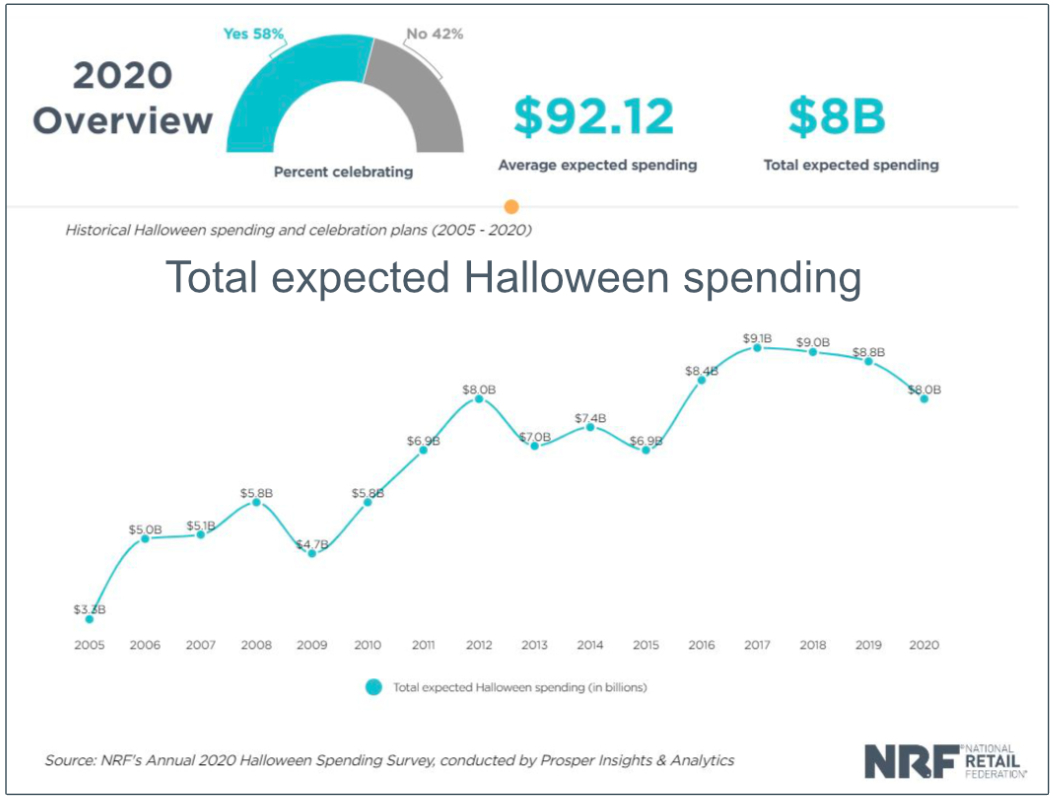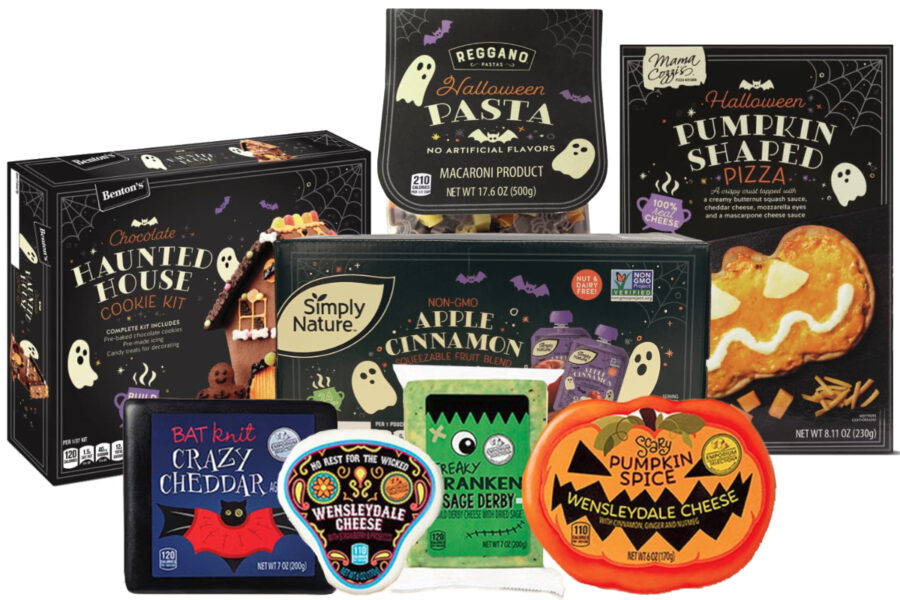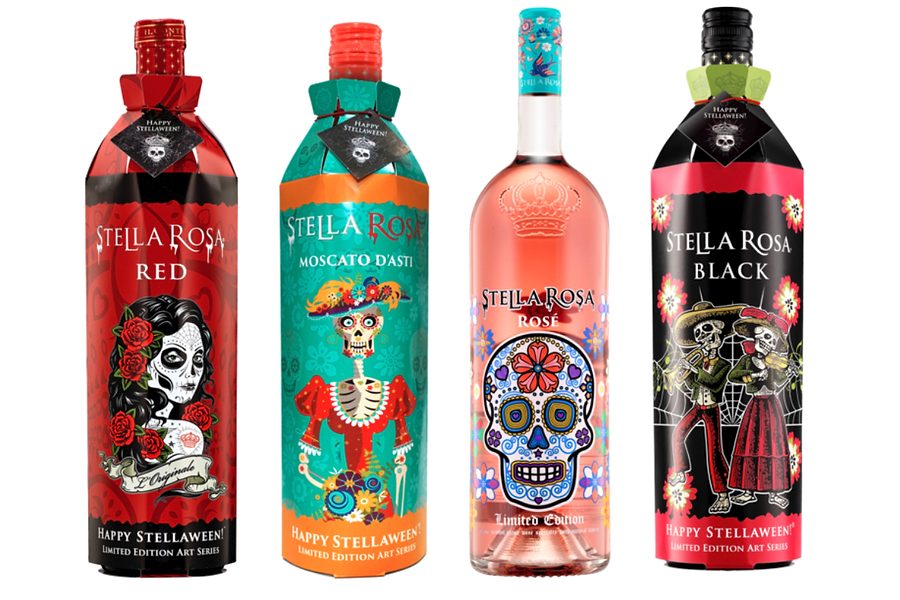 CHICAGO — Checkers & Rally’s Restaurant Inc., Tampa, Fla., announced it is inviting guests in costume to trick-or-treat through the drive-thru on Saturday, Oct. 31, to receive a free four-piece order of Monsterella Stix (breaded mozzarella sticks tossed with the company’s special fry seasoning and served with marinara sauce) with any purchase. No coupon required. This is just one of many examples of how food and beverage marketers have stepped up to the challenge of making sure Halloween happens — albeit with social distancing — during the global pandemic.
CHICAGO — Checkers & Rally’s Restaurant Inc., Tampa, Fla., announced it is inviting guests in costume to trick-or-treat through the drive-thru on Saturday, Oct. 31, to receive a free four-piece order of Monsterella Stix (breaded mozzarella sticks tossed with the company’s special fry seasoning and served with marinara sauce) with any purchase. No coupon required. This is just one of many examples of how food and beverage marketers have stepped up to the challenge of making sure Halloween happens — albeit with social distancing — during the global pandemic.
“With a name like Monsterella Stix, it’s only fitting that we offer them to our loyal guests as a Halloween treat,” said Dwayne Chambers, chief marketing officer. “We wanted to be able to give our customers, no matter their age, the opportunity to trick-or-treat safely and enjoy Halloween.”
Food and beverage marketers — retail and foodservice — may want to explore innovative ways to connect with consumers over the fall and winter holiday months, from Thanksgiving to St. Patrick’s Day, and quite possibly into spring for Easter Sunday, April 4, 2021. While limited-edition and seasonal products long have been around and have had an increased presence in recent years, during the global pandemic they are one of the few little things available to provide some holiday spark.
“With COVID-19 on the rise across the country, this year’s holiday season is shaping up to be one of the least festive on record,” said Jordan Cohen, chief marketing officer, What If Media Group, Fort Lee, NJ.
A recent survey by the performance-marketing company shows that 76% of respondents are not planning on hosting any sort of holiday party this year, even though 40% of those not planning on hosting have done so in recent years. The online survey was conducted with almost 23,000 US adults on Oct. 14-19. With just 19.4% of respondents intending to host some sort of holiday event this year, either at home or another venue, it seems that the season will not provide the kind of relief that many in the event and catering industry have been hoping for after a year marked by shutdowns and reduced capacity due to social distancing requirements. Elsewhere, retailers likely will feel the effects of lower spending on gifts, decorations and even clothing for parties.
“Halloween has always had a big presence, not only as a fun, spooky time for both kids and adults alike, but also as the major holiday leading up to other big celebrations like Thanksgiving, Christmas and New Year’s Eve,” said Laurie Demeritt, chief executive officer, The Hartman Group, Bellevue, Wash. “And yet, as with disruptions brought upon most aspects of life, COVID-19’s effect on Halloween appears to be dampening consumer spending as well as altering their intentions to celebrate it.”

Research from the National Retail Federation, Washington, projects $8 billion in Halloween spending for 2020. This is down from about $8.8 billion last year because of an expected dip in consumer participation in holiday activities.
“As we enter the holiday season, a very important time for the food and beverage industry, we are left wondering whether and how consumers will celebrate this tumultuous year,” Ms. Demeritt said. “Our recent research finds that despite pandemic concerns, most consumers plan to celebrate the holidays but, of course, differently.
“In a typical year, the majority of consumers report loving Thanksgiving and the December holidays (Hanukkah, Christmas, Kwanzaa, etc.) and celebrate them to the fullest. Halloween and New Year’s are also appreciated by consumers, but not as beloved. This year, the majority of consumers anticipate celebrating these holidays the same as in prior years or doing more for them than ever before. The only exception is Halloween. Almost half of consumers anticipate doing less for Halloween or ignoring it completely.”
Halloween was identified as the holiday most likely to be “completely reinvented” by consumers. Only a small minority of consumers indicated that their families would engage in traditional door-to-door trick-or-treating and/or host or attend a large party. Reinvention concepts include making a special Halloween-themed dinner.
That’s what companies like Kraft Heinz, Chicago, are counting on with the rollout of Heinz Tomato Blood Ketchup. Internet searches show creative parents will be carving hot dogs to look like fingers and turning French fries into vampire fangs. Kraft Heinz wants to add the ketchup blood to these festive foods.
“Families have had to navigate a lot this year, and Halloween is no exception.” — Shelly Hayden, The Kraft Heinz Co.
“Families have had to navigate a lot this year, and Halloween is no exception,” said Shelly Hayden, brand manager. “With Heinz Tomato Blood Ketchup, we want to give families a fun way to go big with their spooky celebrations, even if they look a little different in 2020.”
Aldi, Batavia, Ill., is well stocked with a larger range of Halloween-themed foods than in past years. The private label retailer offers everything from a pumpkin-shaped frozen pizza to a haunted house decorating kit.
“Consumers are looking forward to fun and good times during the holidays,” Ms. Demeritt said. “The December holidays in particular are times when consumers say they traditionally like to ‘celebrate the holiday to the fullest.’ This year, that definitely includes planning, shopping for, preparing and enjoying special foods as they are central to our cultural celebrations.
“The kitchen will be a busy place this holiday season. Traditional favorites will dominate holiday menus as consumers do not feel the Thanksgiving and December holidays are ripe for reinvention and innovation this year in terms of food choices. That said, the December holidays are somewhat more likely than Thanksgiving to be a time when consumers might explore some new dishes.”
It’s also a time when they are likely to dip deeper into their pockets to purchase innovative and festive seasonal products to bring some additional holiday cheer to their smaller gatherings. This is an opportunity for food and beverage marketers to get creative.









